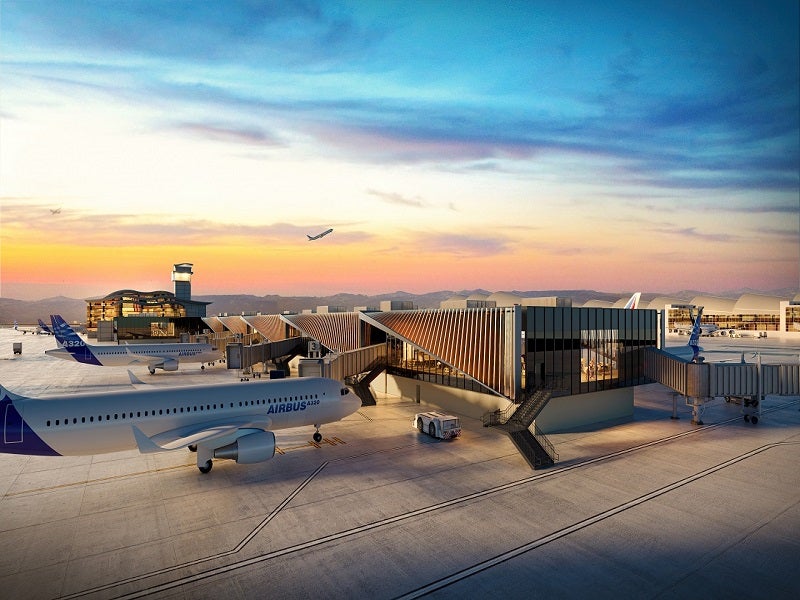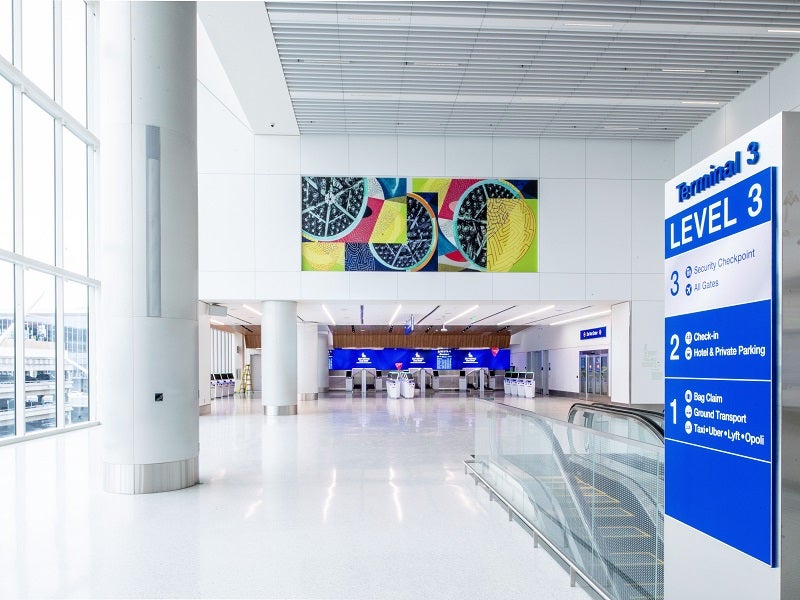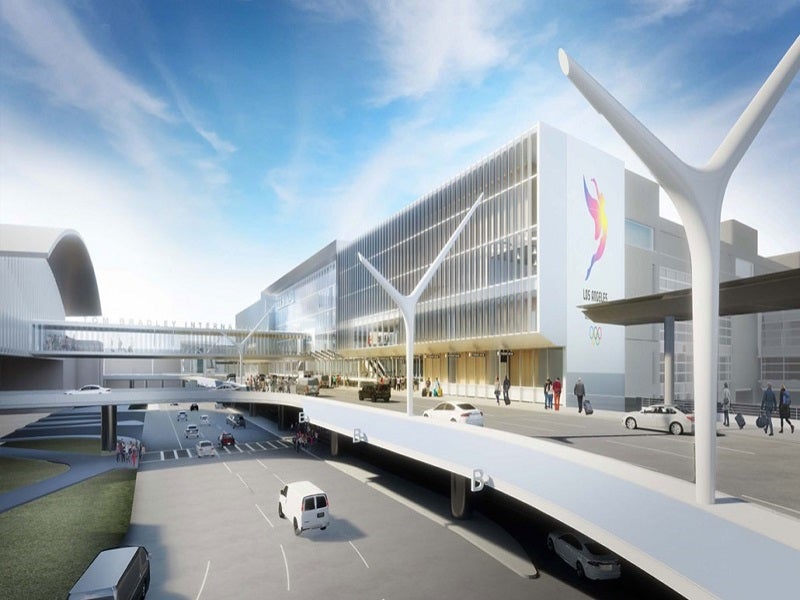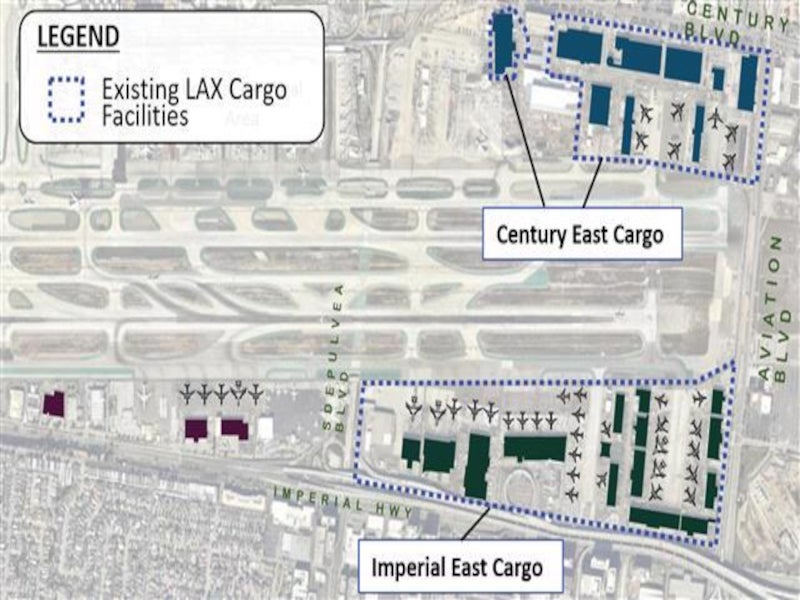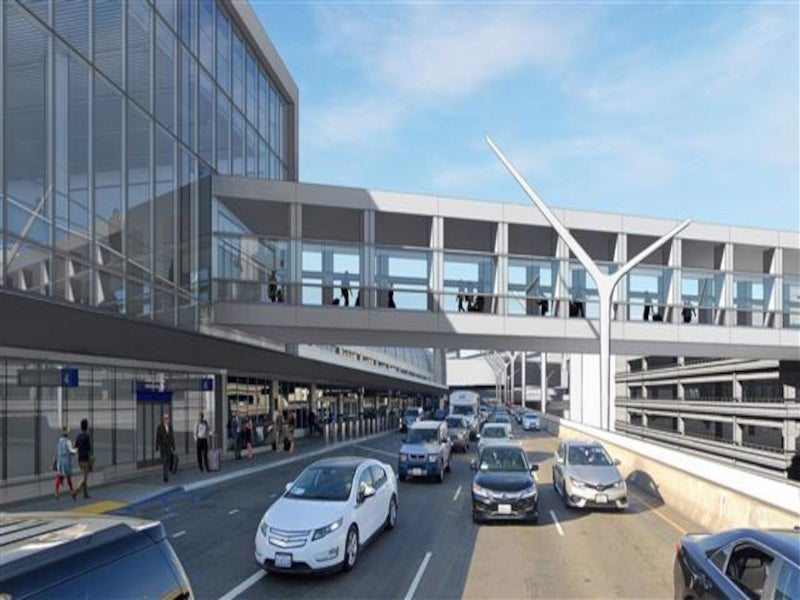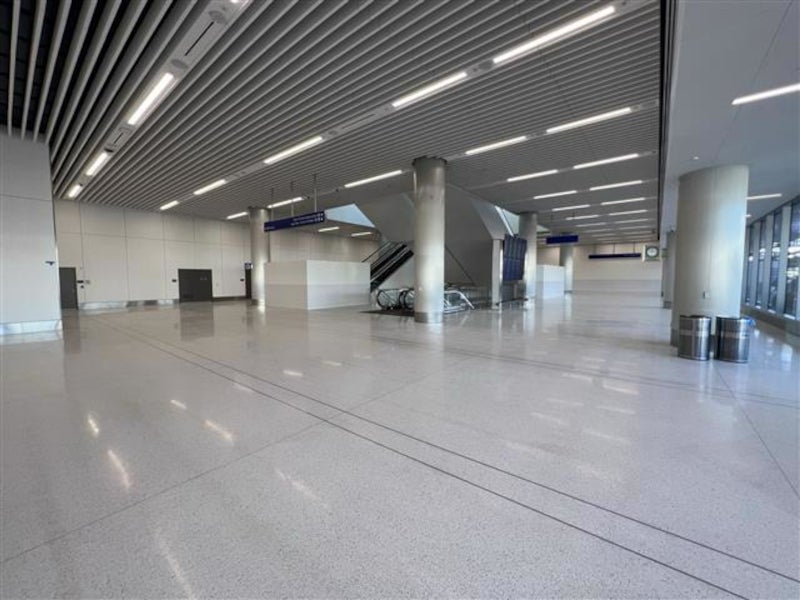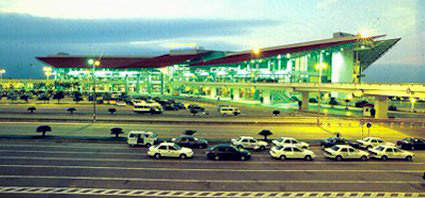Los Angeles International Airport (LAX) is owned and operated by Los Angeles World Airports (LAWA), which also operates another two international airports, Van Nuys and Ontario International airports, in Southern California. It is the second busiest airport in the US.
LAX occupies 1,386ha of land and is the busiest origin and destination airport in the world. It annually contributes more than $61bn to the US economy.
LAX history
The LAX airport site, known as Mines Field, began its operations in October 1928. The site was used for military flights during World War II. Commercial airline service at the airport began in December 1946. The LAX terminal complex was built in 1961 along with a 172ft control tower.
By the 1980s, the airport had constructed international and domestic terminals along with a two-level roadway. A new 277ft Federal Aviation Administration (FAA) control tower with advanced equipment commenced operations in April 1996. The old control tower served the airport for 35 years.
Expansion master plan
Due to the airport’s urban location, major expansion plans faced opposition. The airport authority launched a master plan in 1994, continuously updating it.
Researching requirements marked the first phase, followed by developing alternative solutions. The third phase, starting in 1997, focused on assessing environmental impact, with public consultations held from 1999 to 2003.
Ongoing consultations address disagreements on the expansion’s exact form. Public meetings for LAX master plan amendments occurred in March 2007. Despite finalising most details, some contentious ‘yellow light’ projects remain.
Expansion plans
The expansion of LAX involved three planning stages, offering alternatives A, B, C, and D to address future demand levels. Alternatives A, B, and C focused on westward airport expansion, including new runways, a terminal, a concourse for Tom Bradley International Terminal (TBIT), and automated people mover (APM) systems connecting to the central terminal area.
In 2005, alternative D was selected as the preferred plan for LAX expansion, estimated at $11bn. However, in April 2007, LAWA halted alternative D due to strong opposition from nearby residents.
Key to alternative D was restricting vehicle access by relocating passenger pickup and drop-off to a new ground transportation centre near the entrance, featuring eight 1,400ft kerbs and a 7,500-space parking garage. An APM would connect to a new 6.5 million square foot terminal complex, replacing the existing four million square foot terminal.
Existing parking structures were to be demolished to make way for the expanded facility, with an intermodal centre at the southeast corner linking light rail and buses to 14,600 additional parking spaces. The plan included realigning runways, extending the MTA green line to the airport, and new consolidated car rental facilities.
Gate space was to be reconfigured for larger gates to accommodate next-generation aircraft, reducing the number of gates from 163 to 153.
The changes would enhance airport security by reducing vehicles in the terminal area and enabling advanced screening technology.
In 2009, construction began on a $13.5m Aircraft Rescue and Firefighting Facility at LAX, adding 27,500ft² to the existing facility. The project received $10.8m from the FAA and was completed by TOBO Construction in November 2010.
Change of LAX expansion plan
In November 2008, a new plan was developed focusing on rebuilding and renovating existing terminals, giving priority to accommodate new larger aircraft and increase security. The modernisation plan involves remodelling of the airport infrastructure. It aims to create a greener and lighter terminal.
Fentress Architects was chosen for modernisation design of LAX. The new design is a rooftop flowing in the form of rhythmic waves, inspired by the Pacific Ocean.
Tom Bradley International Terminal renovation
The $737m renovation of TBIT in Los Angeles, the largest project in the city’s history, began in February 2007 and was completed in February 2009. The project included major interior renovations, installation of an in-line checked-baggage security system, and a second boarding gate for large aircraft such as the A380.
Leo A Daly provided architectural and engineering support, with major subcontractors, including Bragg Crane & Rigging, Key Air, ISEC, Murray Company, Nuprecon, Standard Drywall, Siemens Airport Logistics, and Sasco.
The project, the terminal’s first major renovation since its 1984 construction, added approximately 45,000ft² of space and a $140m in-line baggage security screening facility. A $270m elevator and escalator modernisation programme was initiated in May 2009.
LAX Modernization Program details
The $14bn LAX Modernization Program began in 2009 and will transform LAX in advance of the 2028 Olympic and Paralympic Games in Los Angeles.
The $1.9bn TBIT improvement programme under the LAX Modernization Program, launched in 2010, included upgrades completed in September 2013. The new TBIT, includes a total of 18 new gates, nine of which comfortably accommodate passenger loads for new-generation aircraft and concourse areas, and a Great Hall for premier dining, retail and other guest amenities.
The ongoing TBIT Core project, part of the $490m Terminal Cores project at LAX, will extend the terminal eastward by 45ft, providing access to all levels of the terminal buildings and connecting passengers to the APM train system and the city’s public transportation network.
The topping-out ceremony for the TBIT Core project was held in March 2023. The TBIT Core, comprising three levels, will facilitate seamless access to the upcoming APM train’s West Central Terminal Area (CTA) station through an elevated pedestrian pathway over World Way.
The terminal cores are part of seven vertical core structures being built to offer direct access to arriving and departing passengers to the $2bn APM system. The APM system integrates with a parking complex, the K Metro Rail line, and a rental car facility costing around $1bn.
A major airfield improvement project involving the installation of new concrete on Taxilane C9, serving the 12 gates at LAX, was completed in February 2021.
The transformation of Runway 7R/25L and two taxiways on the southern side of the airfield was announced in February 2021. The renovation will include the replacement and removal of about 6,000ft of the runway’s asphalt surface and Taxiways H6 and H7.
Delta’s Sky Way at LAX and Terminal 3 modernisation
The $2.3bn Delta Sky Way terminal modernisation project at LAX connected Terminal 2 with Terminal 3, providing direct post-security access to and from TBIT.
Opened in August 2023, it is part of the LAX Modernization Program. The project includes a new Headhouse, Delta Sky Club, and reconstructed Terminal 3 concourse, enhancing security screening capacity.
Terminal 3, a 1.2 million square feet, 27-gate complex, opened in April 2022. It features a centralised check-in lobby, expanded security checkpoint, baggage claim area, and a state-of-the-art Delta Sky Club, one of Delta’s largest.
In October 2022, Terminal 3 added nine gates, new concessions, and ample seating areas. Delta’s new West Headhouse and Delta One check-in and ticketing lobby at LAX’s Terminal 3 opened in May 2023.
Other modernisation programmes of the airport
The $5.5bn Landside Access Modernization Program (LAMP) includes five key components, a 2.25mi APM linking three on-airport stations to Metro Rail and transit services, thereby establishing a seamless link to public transportation; a Consolidated Rent-A-Car centre; two Intermodal Transportation Facilities providing extra parking, ground transportation services, and accommodations for meet-and-greet activities; and enhancements to the roadway system.
The Midfield Satellite Concourse (MSC) South is an expansion of the West Gates located at the TBIT, which broke ground in June 2023. The extension will increase the terminal’s capacity by approximately 150,000ft2 and introduce eight gates tailored for narrowbody aircraft.
Employing a pioneering construction approach known as Offsite Construction and Relocation, MSC South will be fabricated in nine segments at a distance of about a mile and a half from the main project site. The segments will then be transported and assembled on-site. The project is expected to be completed in 2025.
Terminal renovation
In 2006, Gate 101 at the south end of the terminal concourse was renovated to accommodate larger jets. Mid-2006 saw renovations to the passenger boarding lounge and outside ramp area at Gate 123 on the north end to create a second gate for Airbus 380 and Boeing 747-800.
The terminal renovation aimed to enhance comfort and convenience, including upgrades to the lower-level lobby, restrooms, accessibility features, elevators, escalators, signage, temperature control, ventilation, fire safety, and electrical systems. Terminal 6 underwent a $238m renovation in 2012, expanding the lobby space and modernising passenger facilities.
Terminal 4.5 Core, the first significant segment completed within a $1.62bn project at the 60-year-old Terminals 4 and 5, was unveiled in November 2022. The construction of the project, which provides a central location between Terminals 4 and 5, began in July 2019.
Terminal 4.5 Core offers direct connectivity to Terminal 5’s baggage claim and check-in lobby. Furthermore, it serves as a centralised hub between Terminals 4 and 5, granting passengers access to all four levels of the terminal building on the pre-security side via elevators, escalators, and stairs.
The modernisation of terminals 4 and 5 is expected to be completed in 2024.
Runways
The north runway was reconfigured to include a central taxiway, enhancing runway separation. The southernmost north runway (runway 24L) was relocated 340ft south, necessitating the demolition of Terminals 1, 2, 3, and part of the TBIT. The MSC South is under construction west of the TBIT to replace the removed gates. The satellite concourse will connect to the CTA via an underground APM.
On the south runway system, the southernmost runway (runway 25L) was moved 50ft south to accommodate a new central taxiway, improving airfield safety. The $89m central taxiway project commenced in April 2007 and was completed in June 2008.
R & L Brosamer was the contractor, with construction support from Paragon Project Resources. The taxiway was part of the $333.6m South Airfield Improvement Program and was designed by HNTB. CH2MHill served as the construction manager, while O&G and Tutor-Saliba were the general contractors.
Intermodal transportation
A new Intermodal Transportation Center (ITC) located at the north-east corner of Imperial Highway and Aviation Boulevard provides the primary short-term parking for the airport with access by APM to the CTA with one stop at the new consolidated car rental facility.
The ITC improves transit access with a direct connection to the Metro Green Line’s Aviation Station and serves as the connecting point for regional transit buses and future MTA rapid buses. A pedestrian bridge with moving walkways connects the Green Line Imperial / Aviation Station directly to the ITC and the APM system to the CTA.
Car rental
The rental car facility consolidates all on-airport rental car operations for LAX for the convenience of passengers and to improve efficiency of the car rental companies. The new facility was planned to be connected via the new APM to the CTA and ITC to alleviate the traffic impacts of multiple shuttle buses.
Security screening of passengers and baggage would be introduced for passengers prior to boarding the APM trains. The trains will be designed to accommodate passengers along with luggage and trolleys. The service would run every two minutes with a waiting time of just one minute.
New lounges
A $20m project to construct four new lounges on the fourth and fifth floors of TBIT was started in October 2006 and completed in January 2008. The project was completed in four phases and was financed by airline participants.
The four lounges feature new amenities and furnishings, which replaced 16 individual lounges and expanded the terminal’s overall lounge space to 46,972ft² (an increase of 72%). Three of the new lounges serve airline alliances and the fourth for customers of airlines not affiliated with an alliance.
Cargo modernisation programme
Cargo facilities at LAX are at the end of their life, ranging from 20 to 80 years old and are not compatible with current industry standards. A cargo modernisation programme was proposed at LAX to provide efficient cargo movements and provide a positive impact on the surrounding community.
The cargo modernisation will be carried out by a development team led by LAX Community Partners and an Environmental Technical and Expert Consultant team led by Ricondo & Associates.
LAX’s Cargo Modernisation Program aims to enhance cargo facilities and capabilities at LAX, enabling the city of Los Angeles and the broader Southern California region to bolster economic vitality through improved technical advancements and efficiency.
Technology
The terminal receives new modern technology such as dynamic video monitors that automatically update flight status and information technology components that support the upgrades and promote better passenger flow.
LEED standards
The project was the first at Los Angeles Airport to incorporate Leadership in Energy and Environmental Design (LEED) standards developed by the US Green Building Council.
The terminal receives more efficient heating, ventilation and air conditioning systems and more efficient electrical and lighting systems, which reduce energy consumption, while new plumbing systems increase water conservation.
More than 75% of the construction and demolition waste was recycled or salvaged and the design featured local and sustainable building materials and finishes.
The MSC South project is designed to achieve LEED Silver accreditation goal. Terminal 4.5 Core has achieved LEED Gold certification.
Terminals
The airport has nine terminals in a central complex with parking spots for about 140 aircraft.
The total area of the passenger terminals is 3.8 million square feet and that of the cargo terminals is about two million square feet. The nine terminals in the complex are linked by a U-shaped two-level roadway. A free shuttle bus service is provided.
The CTA has a baggage check-in facility on the upper departure level and a baggage claim at the lower level.
The terminal also features cocktail lounges, duty-free shops for international flights, restaurants, restrooms, business centres and public telephones. The TBIT has a first aid station and special phones that are connected to the transport and hotels.
Free Wi-Fi services were introduced at the airport in September 2012.
Air traffic control
LAX airport has four east/west parallel runways of 150ft width: 24R/6L, 24L/6R, 25R/7L and 25L/7R. The uniquely designed air traffic control (ATC) tower serves the four parallel runways, which are handled by individual ground controllers. The central position of the tower cab operates the gate-hold positions, flight data and clearance deliveries. The airport is served by about 80 passenger and 20 cargo carrier flights of all the major airlines.
LAX airport also acts as a base for the US Coast Guard’s Air Station Los Angeles facility. The station is located near the north runway complex and is used for controlling oil pollution in coastal waters and maritime law enforcement.
Car parking
The airport has a total of 25,000 parking spaces, including 8,000 slots in the central terminal and 11,000 in the long-term parking areas. Terminal 4 has valet parking. Public bus service of Metropolitan Transportation Authority Bus Center is also available in the airport’s north-east.
Contractors involved
The TBIT construction was carried out by a joint venture of Clark Construction Group and McCarthy Building Companies. O’Connor Construction Management provided various services, such as cost estimating and phasing studies.
Parsons acted as the construction manager. W.E. O’Neil Construction was the contractor for the TBIT renovation, with equipment supplied by KONE and Schindler.
Woods Bagot Los Angeles is the design architect for the MSC South project, with Raw International as the associate architect and W.E. O’Neil Construction as the general contractor and construction manager.
Buro Happold is the structural engineer and sustainability consultant, responsible for lighting design and acoustics. Mott MacDonald is the civil engineer, Diaz Yourman & Associates is the geotechnical engineer, and Swanson Rink handled baggage handling, passenger boarding bridges, and fuelling works for the MSC South project.
Syska Hennessy Group is the mechanical and plumbing engineer, and PBS Engineering is the electrical engineer for the MSC South project.
The MSC South project also involves TLC Engineering Solutions for IT, communications and security, Selbert Perkins Design for wayfinding, Pfeiler & Associates Engineers for site investigations and surveying, Schwab Engineering for fire protection and Jensen Hughes for group code compliance.
Gensler designed the Terminal 4.5 Core project, with Hensel Phelps as the construction contractor.

